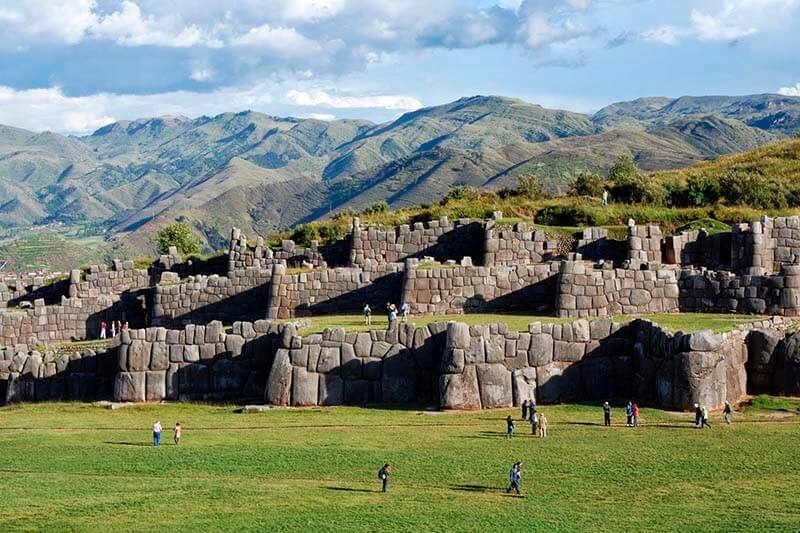Looking for a Stone Mason? Find an Incan one!
Your spouse, your friend, may recommend you this or that stonemason. Good intentions. But before you make your choice, you should read this article.

You are buying a house. You want it to be both imposing and natural, stylish and simple, durable and elegant. You decided on the stone; You're right. It has got everything you've been looking for.
You may have a more modest purpose than building a house. It's like having a wall of your house made of stone for decorative purposes. True, it will look so much more elegant.
It's hard to decide, yet you made it. But unfortunately, there is more: Veneering...
There's no need to argue to decide who the best stonemasons are. If you're looking for the best, you will find a master. For this, you will reach South America. When you see the references of the master, you will understand that it is worth the effort.
12 Angeled Stone of Cusco
Let's start from the capital: Cusco, Peru's capital, was the administrative, political and military center of the Inca civilization, the largest empire in the pre-Columbian America. In 1983, Cusco became a UNESCO World Heritage Site. The city is a popular destination for those who want to know the Inca Empire. It is not surprising to find some of the most impressive works of Inca masonry here.
The most well-known example is the famous 12-angeled stone in the historic center of Cusco. This stone is located on a wall that reflects the classic Inca style. Stone wall made of mortar. I mean, there's nothing in there that sticks stones together. This is a wall of stones cut by hand and lined up in a row. The large number of edges, the stones are locked together to provide a solid structure. So much so that the wall remains intact for centuries. The stones are so perfectly processed that they are clamped together so that even a piece of paper cannot pass through the stones. Fine workmanship, that should be it.
The corner of the wall is rounded. A high level of aesthetics and a unique workmanship.
From the capital to the ancient city
Let's move from Cusco to the ancient city of Sacsahuaman near the city of Cuzzo. There is also a charming wall built by the Incas. The wall was formed by the interlocking of stones of different sizes and shapes without any mortar material, like jigsaw. The stones have been cut so millimeter that even a small piece of paper cannot enter here between tons of stones.
One of the stones that make up the wall is the size of a five-story house and weighs about 440 tons. Even today, when the number of cranes to lift this weight is low, how and with whom did the Kales move such a stone block centuries ago? How do these large blocks was cut and furnished so precisely? There are many theses, but the answers are still a mystery today. But it should be reminded that the Incas had not yet discovered iron while they were making these stone works. Therefore, they are thought to have been cut and shaped by using stone tools. They may have used tools from bronze and copper, but the possibility that the stones used by the Incas are often volcanic weakens this possibility. There is also the argument that the incas broke rocks with wooden wedges placed in the cracks. Accordingly, the wooden wedges firmly placed in the cracks are wetted, so that after waiting for a while, the expanding wood must be splitting the rock.
And why did the Incas cut stones differently in different ways, not symmetric, but large and small? First, the load balance will be set aside as long as the rectangular, sharp and angular symmetries, and this is the most rigorous construction technique. The second reason is that they cut the stone by hitting the stone to the stone. Therefore, trying to create a symmetrical shape is a waste of time. The third and most important reason is that the stones must be locked together.
Mastery: Machu Picchu
The best craftsmanship works of the Incas are undoubtedly the city of Machu Picchu, built at a height of 2430 meters, which is able to live around 1000 people without any support from outside.
Machu Picchu'da stone masonry in the form of the application of today is not easy. The habit of today's people to build a structure on a sloping land, first flattening the land, and then raising a building on flat ground. But in Machu Picchu, he went out of his way to adapt to nature. The city was carved on the stones of a granite mountain; not carrying stones to the mountain. The weight of a 30x30x30 cm granite stone is 80 kilos, which is the smallest of the stones used. Therefore, it was much smarter to place the structure regarding to the stones' placements, rather than carrying the stones.





